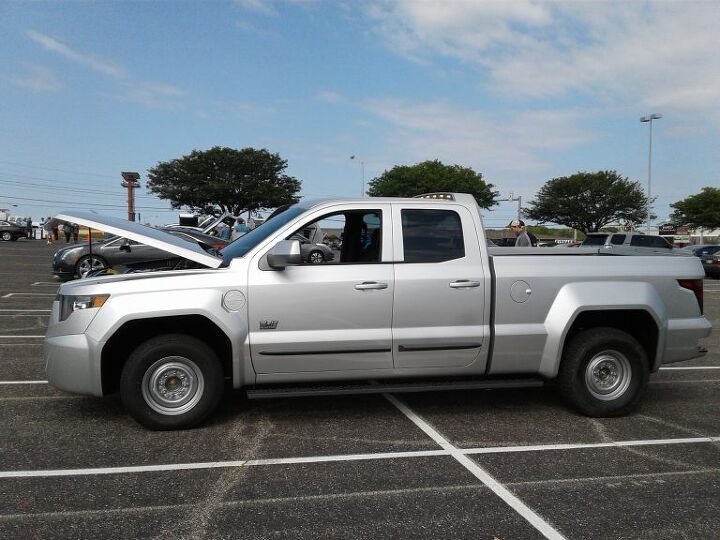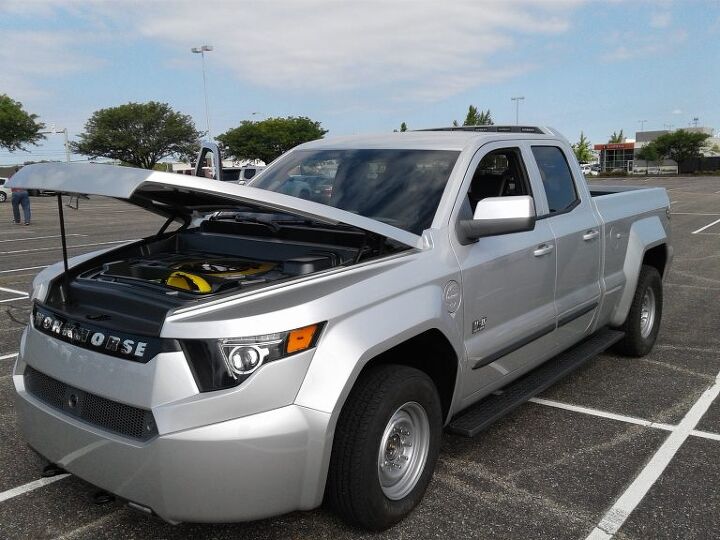Trump: Electric Truck Maker to Buy GM's Lordstown Assembly

In a surprising turn of events, President Donald Trump broke a hot bit of news on Wednesday, tweeting that electric truck maker Workhorse Group has closed a deal to buy GM’s mothballed Lordstown Assembly plant, formerly home to the Chevrolet Cruze.
The news came by way of GM CEO Mary Barra, Trump said, and the automaker isn’t denying the plant sale.
Workhorse, you’ll recall, is the Cincinnati-based builder of an extended-range EV pickup — one TTAC’s Corey Lewis crawled all over back in September of 2017. Earlier that year, the company began taking fleet orders for its W-15 pickup, with the general public getting in on orders in January of 2018.
“GREAT NEWS FOR OHIO!” Trump said, laying out the news in two consecutive tweets.
“Just spoke to Mary Barra, CEO of General Motors, who informed me that, subject to a UAW agreement etc., GM will be selling their beautiful Lordstown Plant to Workhorse, where they plan to build Electric Trucks. GM will also be spending $700,000,000 in Ohio…in 3 separate locations, creating another 450 jobs. I have been working nicely with GM to get this done. Thank you to Mary B, your GREAT Governor, and Senator Rob Portman. With all the car companies coming back, and much more, THE USA IS BOOMING!”
Lordstown Assembly built its last Cruze in March, ending a plant production run that started in 1966. Down to one shift at the time of the discontinuation, GM’s decision to “unallocate” the plant left 1,800 workers in search of jobs. Last month, group of 100 of workers finished building Cruze replacement parts.
While Workhorse is a small company, a GM spokesperson told NBC affiliate WKYC the automaker is “not disputing any info in the tweets.”
The company that Trump says is buying GM Lordstown had $763k in net sales in 2018, and a $36.5m net loss, according to its latest annual report. https://t.co/ee5jflNFMc
— Jim Tankersley (@jimtankersley) May 8, 2019
The Workhorse W-15 is capable of driving 80 miles on electric power alone. Its platform is an in-house job, with range extended by the presence of a gasoline engine that acts as a generator. Payload is 2,200 pounds and towing capacity is 5,000 pounds, the company says, and pricing starts at $52,500 before applicable tax credits.
Total system horsepower is 460 hp.
Two electric motors, fed by a battery pack supplied by Panasonic, give the W-15 all-wheel drive capability, and the only bodystyle available for order is a crew cab with a 6.5-foot bed. Workhorse said early last year that the W-15 would enter full production in 2019.
As of publication time, General Motors had not officially announced the sale of Lordstown Assembly. We’ll get you word on that when it appears. Interestingly, the Workhorse website is down.
(Update: In a release, GM said “it is in discussions with Workhorse Group Inc. and an affiliated, newly formed entity to sell the company’s Lordstown Complex in Lordstown, Ohio. The move has the potential to bring significant production and electric vehicle assembly jobs to the plant. Upon final agreement, the entity, led by Workhorse founder Steve Burns, would acquire the facility. Workhorse would hold a minority interest in the new entity.”
Once a final agreement is reached, work could begin immediately to prepare the plant for electric pickup production, GM said.
The 450 Ohio jobs mentioned by Trump are manufacturing positions split between GM’s diesel engine-building DMAX plant in Moraine, Toledo Transmission (home of the 10-speed automatic), and Parma Metal Center, producer of stamped parts.)
[Images: Corey Lewis/TTAC, General Motors]

More by Steph Willems
Latest Car Reviews
Read moreLatest Product Reviews
Read moreRecent Comments
- W Conrad I'm not afraid of them, but they aren't needed for everyone or everywhere. Long haul and highway driving sure, but in the city, nope.
- Jalop1991 In a manner similar to PHEV being the correct answer, I declare RPVs to be the correct answer here.We're doing it with certain aircraft; why not with cars on the ground, using hardware and tools like Telsa's "FSD" or GM's "SuperCruise" as the base?Take the local Uber driver out of the car, and put him in a professional centralized environment from where he drives me around. The system and the individual car can have awareness as well as gates, but he's responsible for the driving.Put the tech into my car, and let me buy it as needed. I need someone else to drive me home; hit the button and voila, I've hired a driver for the moment. I don't want to drive 11 hours to my vacation spot; hire the remote pilot for that. When I get there, I have my car and he's still at his normal location, piloting cars for other people.The system would allow for driver rest period, like what's required for truckers, so I might end up with multiple people driving me to the coast. I don't care. And they don't have to be physically with me, therefore they can be way cheaper.Charge taxi-type per-mile rates. For long drives, offer per-trip rates. Offer subscriptions, including miles/hours. Whatever.(And for grins, dress the remote pilots all as Johnnie.)Start this out with big rigs. Take the trucker away from the long haul driving, and let him be there for emergencies and the short haul parts of the trip.And in a manner similar to PHEVs being discredited, I fully expect to be razzed for this brilliant idea (not unlike how Alan Kay wasn't recognized until many many years later for his Dynabook vision).
- B-BodyBuick84 Not afraid of AV's as I highly doubt they will ever be %100 viable for our roads. Stop-and-go downtown city or rush hour highway traffic? I can see that, but otherwise there's simply too many variables. Bad weather conditions, faded road lines or markings, reflective surfaces with glare, etc. There's also the issue of cultural norms. About a decade ago there was actually an online test called 'The Morality Machine' one could do online where you were in control of an AV and choose what action to take when a crash was inevitable. I think something like 2.5 million people across the world participated? For example, do you hit and most likely kill the elderly couple strolling across the crosswalk or crash the vehicle into a cement barrier and almost certainly cause the death of the vehicle occupants? What if it's a parent and child? In N. America 98% of people choose to hit the elderly couple and save themselves while in Asia, the exact opposite happened where 98% choose to hit the parent and child. Why? Cultural differences. Asia puts a lot of emphasis on respecting their elderly while N. America has a culture of 'save/ protect the children'. Are these AV's going to respect that culture? Is a VW Jetta or Buick Envision AV going to have different programming depending on whether it's sold in Canada or Taiwan? how's that going to effect legislation and legal battles when a crash inevitibly does happen? These are the true barriers to mass AV adoption, and in the 10 years since that test came out, there has been zero answers or progress on this matter. So no, I'm not afraid of AV's simply because with the exception of a few specific situations, most avenues are going to prove to be a dead-end for automakers.
- Mike Bradley Autonomous cars were developed in Silicon Valley. For new products there, the standard business plan is to put a barely-functioning product on the market right away and wait for the early-adopter customers to find the flaws. That's exactly what's happened. Detroit's plan is pretty much the opposite, but Detroit isn't developing this product. That's why dealers, for instance, haven't been trained in the cars.
- Dartman https://apnews.com/article/artificial-intelligence-fighter-jets-air-force-6a1100c96a73ca9b7f41cbd6a2753fdaAutonomous/Ai is here now. The question is implementation and acceptance.




































Comments
Join the conversation
So this is like when Elio "bought" the Shreveport S-10 plant from GM and never built anything in it?
2 questions why does the UAW have a say? and does the plant have to stay Union? Their sales are tiny 736K at $44k a truck does not amount to much.